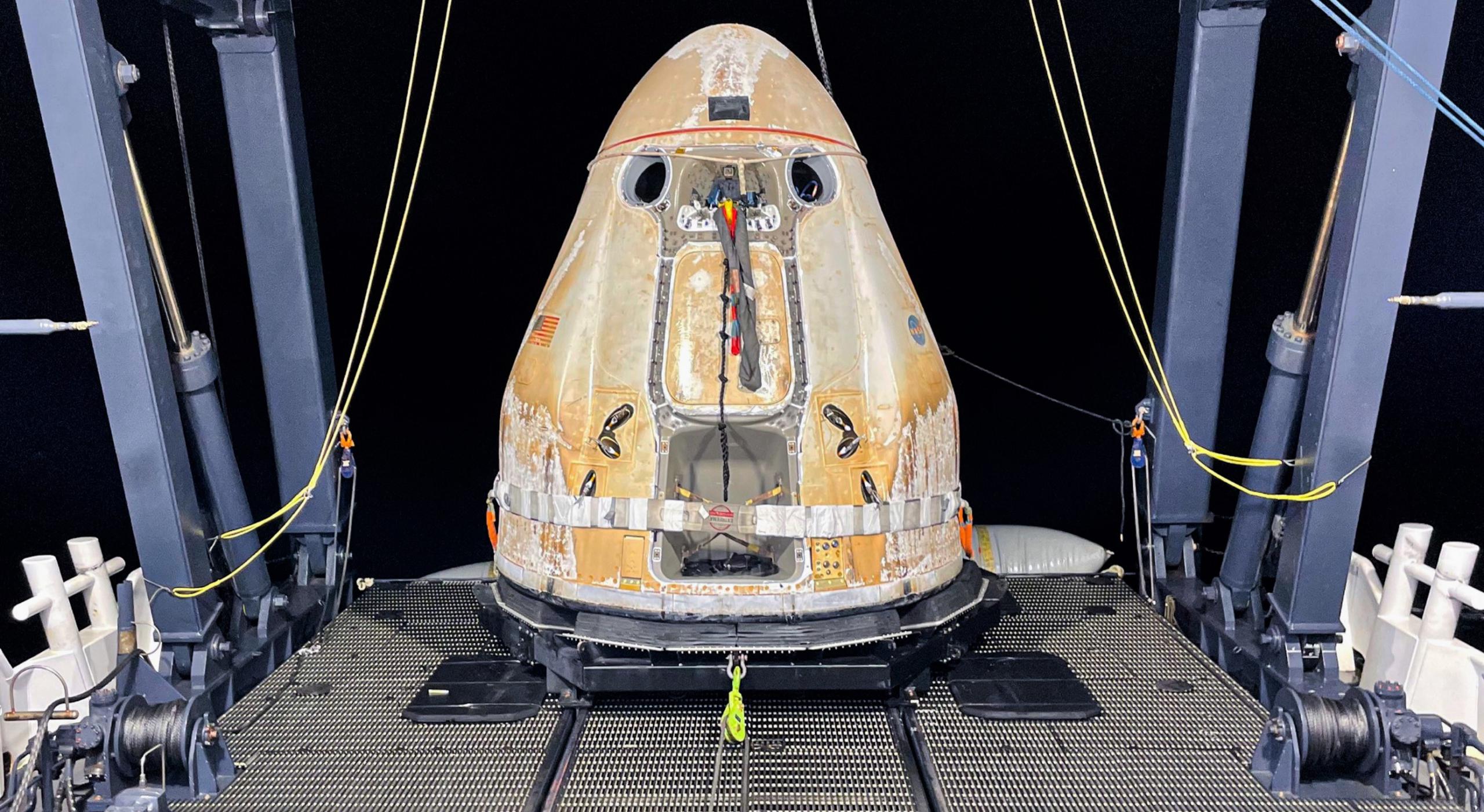
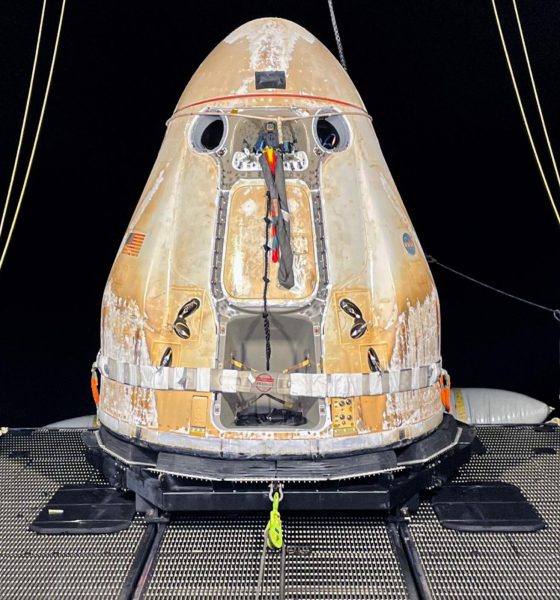
News
SpaceX Dragon spacecraft returns NASA cargo to Earth after six weeks in space
A SpaceX Cargo Dragon 2 spacecraft has safely returned to Earth after delivering several tons of NASA supplies to the International Space Station (ISS).
A little over six weeks after Falcon 9 launched SpaceX’s 26th Commercial Resupply Services 2 (CRS2) mission for NASA, Dragon departed the ISS on January 9th. Efficiently lowering its orbit with several small Draco thrusters took about 36 hours, and reusable Dragon 2 capsule C211 eventually slowed to the point that it began impacting Earth’s atmosphere. Using its ablative heat shield like a brake pad, Dragon slowed from a velocity of 7.5 kilometers per second (16,800 mph) to about 155 meters per second (~350 mph) before beginning parachute deployment.
At 5:19 am on January 11th, the Dragon capsule gently splashed down off the coast of Tampa, Florida, and was quickly secured by a SpaceX recovery ship. Once onboard, the capsule was opened up, and cargo fresh from orbit was loaded onto a helicopter as quickly as possible. That system – primarily created to rapidly transport astronauts back to NASA medical facilities – also means that scientists can get access to their recovered ISS experiments just a handful of hours after Cargo Dragon splashes down.
The update that's rolling out to the fleet makes full use of the front and rear steering travel to minimize turning circle. In this case a reduction of 1.6 feet just over the air— Wes (@wmorrill3) April 16, 2024
Some of the scientific investigations returned by Dragon include:
Deep space radiation protection: A vest designed to protect astronauts from high doses of radiation caused by unpredictable solar particle events is returning to Earth after months of testing. Crew members wore the Astrorad vest while performing daily tasks and provided feedback about how easy it is to put on, how it fits and feels, and the range of motion possible while wearing it. The vest’s developers plan to use that feedback to improve design of the garment, which could provide radiation protection for astronauts on Artemis missions to the Moon.
Air, water, plants: XROOTS used hydroponic (water-based) and aeroponic (air-based) techniques to grow plants without soil or other growth media. Researchers collected video and still images to evaluate growth chambers through the plant life cycle from seed germination through maturity. The plant chambers are returning to Earth for additional analysis. Similar techniques could be used to produce crops for future space missions and to enhance cultivation and food security for the benefit of people on Earth.
Bioprospecting in space: Bioprospecting is the process of identifying plants and animals that may contain substances with potential for use as drugs, biochemicals, and more. Previous studies found that space can cause genetic and physiological changes that could result in microbes yielding such materials. Rhodium Microgravity Bioprospecting-1 studied a way to search for these microbes. The science chambers and temperature logger from the investigation are returning to Earth for further examination.”
Blogs.NASA.gov – January 11th, 2023
SpaceX’s second-generation Cargo Dragon spacecraft is nearly identical to Crew Dragon. Both are made up of two main parts: a reusable capsule and an expendable ‘trunk.’ The Dragon 2 trunk is a tube-like carbon fiber composite structure covered by a skin of curved solar arrays and radiators. It can also hold several tons of unpressurized cargo.
Dragon’s capsule holds a pressure vessel, environmental control systems (ECLSS), all 16 Draco maneuvering thrusters, propellant tanks, docking systems, and an ablative heat shield. In the case of Crew Dragon, the capsule is also outfitted with windows, crew seats, hand control, and SuperDraco launch abort thrusters. Both Cargo and Crew Dragon capsules represent the vast majority of the total spacecraft cost and can be recovered, refurbished, and reflown in as little as four months.
NASA is SpaceX’s only Cargo Dragon customer. January 11th’s recovery marked the completion of CRS2 Spx-26, SpaceX’s 25th successful ISS resupply mission since 2012. After adding more contracts last year, NASA has arrangements for at least nine more Dragon 2 resupply missions stretching into 2026 or 2027. NASA also signed contracts for eight Crew Dragon astronaut launches in 2022 and has nine missions on contract between now and the late 2020s or 2030.
While Falcon 9 infamously failed during the June 2015 launch of CRS-7, every Dragon that has ever reached orbit has been recovered in one piece. Spx-26 was Dragon’s 38th mission overall and 35th consecutively successful recovery from orbit.
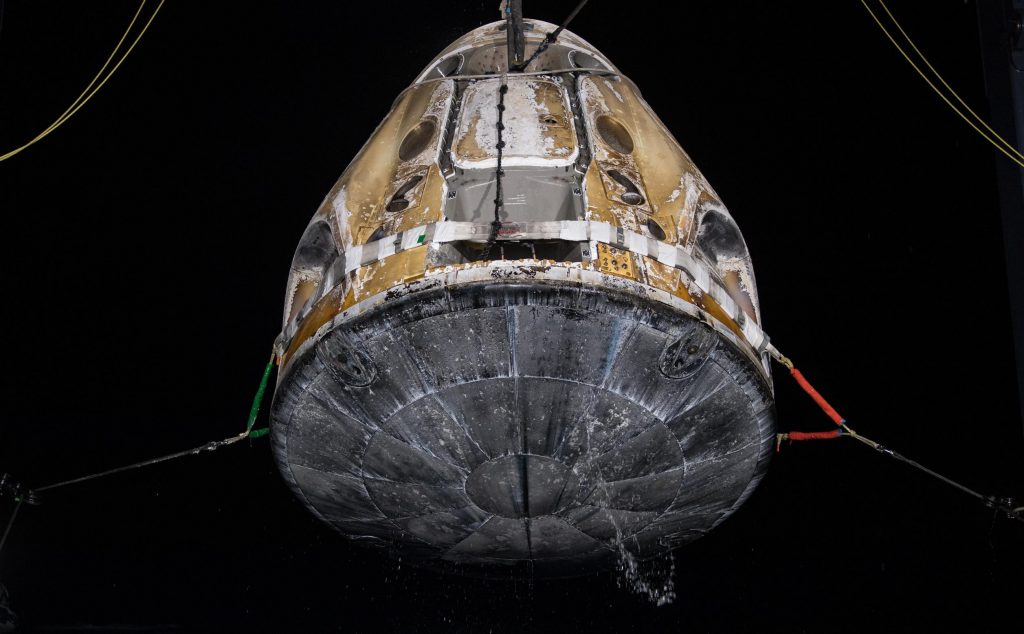

News
Tesla Europe rolls out FSD ride-alongs in the Netherlands’ holiday campaign
The festive event series comes amid Tesla’s ongoing push for regulatory approval of FSD across Europe.
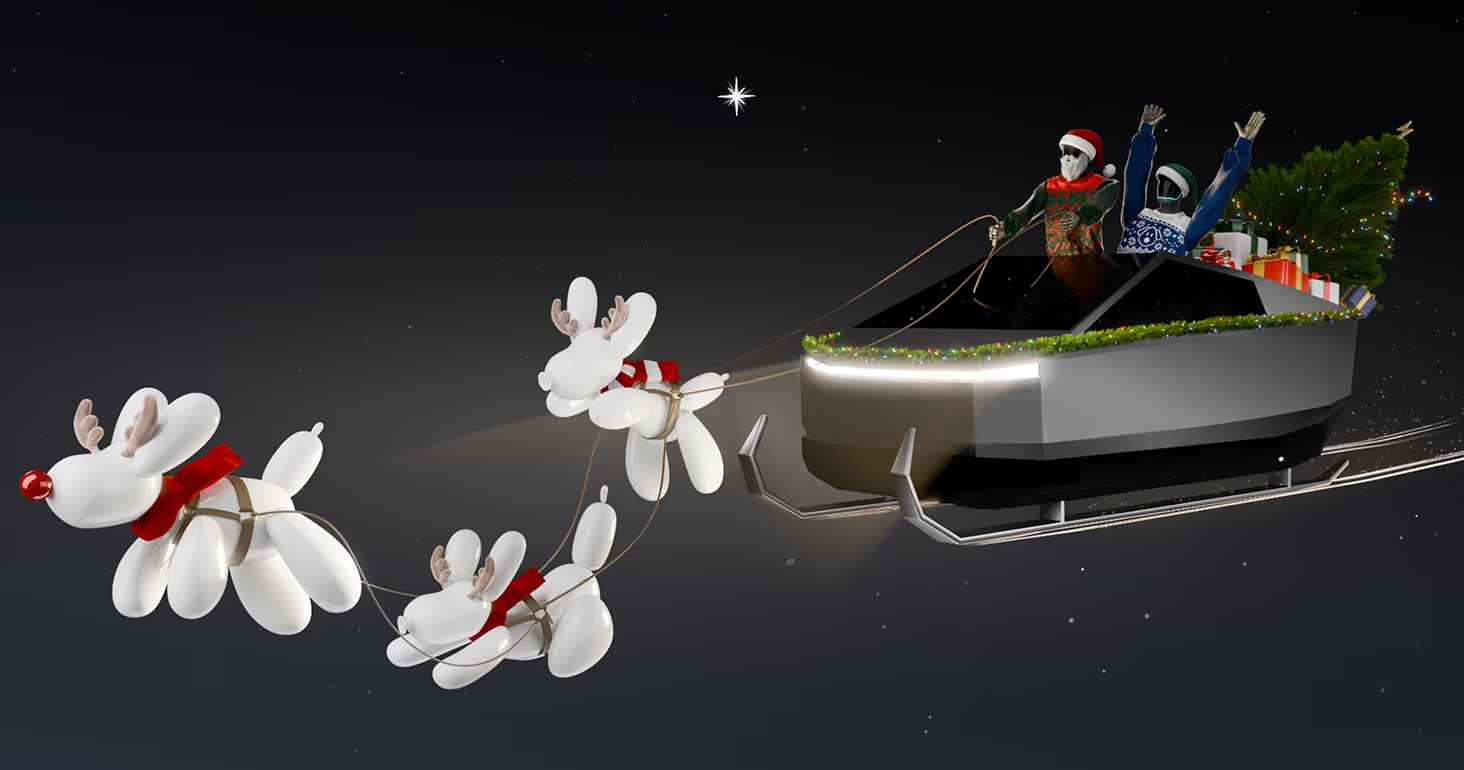
Tesla Europe has announced that its “Future Holidays” campaign will feature Full Self-Driving (Supervised) ride-along experiences in the Netherlands.
The festive event series comes amid Tesla’s ongoing push for regulatory approval of FSD across Europe.
The Holiday program was announced by Tesla Europe & Middle East in a post on X. “Come get in the spirit with us. Featuring Caraoke, FSD Supervised ride-along experiences, holiday light shows with our S3XY lineup & more,” the company wrote in its post on X.
Per the program’s official website, fun activities will include Caraoke sessions and light shows with the S3XY vehicle lineup. It appears that Optimus will also be making an appearance at the events. Tesla even noted that the humanoid robot will be in “full party spirit,” so things might indeed be quite fun.
“This season, we’re introducing you to the fun of the future. Register for our holiday events to meet our robots, see if you can spot the Bot to win prizes, and check out our selection of exclusive merchandise and limited-edition gifts. Discover Tesla activities near you and discover what makes the future so festive,” Tesla wrote on its official website.
This announcement aligns with Tesla’s accelerating FSD efforts in Europe, where supervised ride-alongs could help demonstrate the tech to regulators and customers. The Netherlands, with its urban traffic and progressive EV policies, could serve as an ideal and valuable testing ground for FSD.
Tesla is currently hard at work pushing for the rollout of FSD to several European countries. Tesla has received approval to operate 19 FSD test vehicles on Spain’s roads, though this number could increase as the program develops. As per the Dirección General de Tráfico (DGT), Tesla would be able to operate its FSD fleet on any national route across Spain. Recent job openings also hint at Tesla starting FSD tests in Austria. Apart from this, the company is also holding FSD demonstrations in Germany, France, and Italy.
News
Tesla sees sharp November rebound in China as Model Y demand surges
New data from the China Passenger Car Association (CPCA) shows a 9.95% year-on-year increase and a 40.98% jump month-over-month.
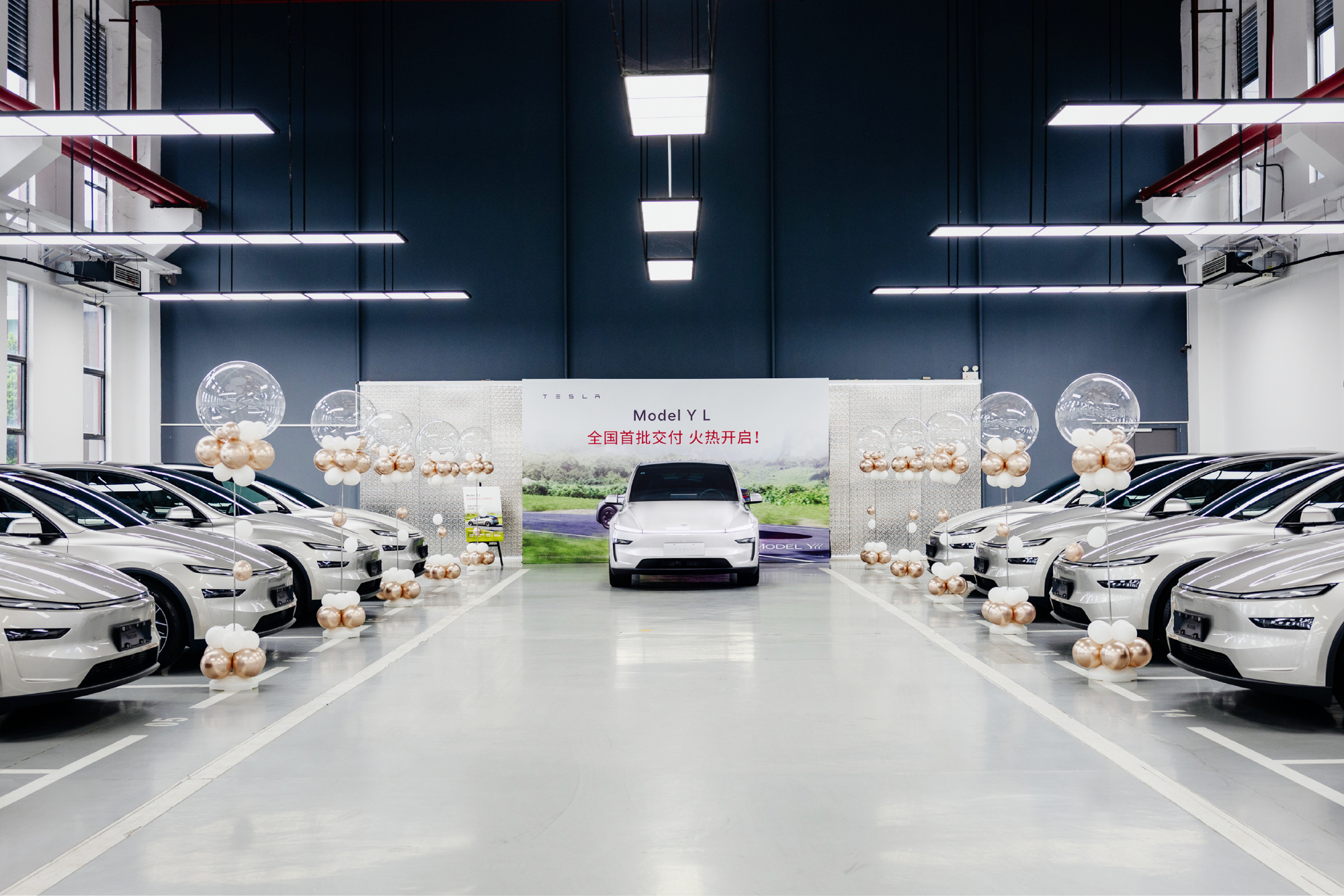
Tesla’s sales momentum in China strengthened in November, with wholesale volumes rising to 86,700 units, reversing a slowdown seen in October.
New data from the China Passenger Car Association (CPCA) shows a 9.95% year-on-year increase and a 40.98% jump month-over-month. This was partly driven by tightened delivery windows, targeted marketing, and buyers moving to secure vehicles before changes to national purchase tax incentives take effect.
Tesla’s November rebound coincided with a noticeable spike in Model Y interest across China. Delivery wait times extended multiple times over the month, jumping from an initial 2–5 weeks to estimated handovers in January and February 2026 for most five-seat variants. Only the six-seat Model Y L kept its 4–8 week estimated delivery timeframe.
The company amplified these delivery updates across its Chinese social media channels, urging buyers to lock in orders early to secure 2025 delivery slots and preserve eligibility for current purchase tax incentives, as noted in a CNEV Post report. Tesla also highlighted that new inventory-built Model Y units were available for customers seeking guaranteed handovers before December 31.
This combination of urgency marketing and genuine supply-demand pressure seemed to have helped boost November’s volumes, stabilizing what had been a year marked by several months of year-over-year declines.
For the January–November period, Tesla China recorded 754,561 wholesale units, an 8.30% decline compared to the same period last year. The company’s Shanghai Gigafactory continues to operate as both a domestic production base and a major global export hub, building the Model 3 and Model Y for markets across Asia, Europe, and the Middle East, among other territories.
Investor's Corner
Tesla bear gets blunt with beliefs over company valuation
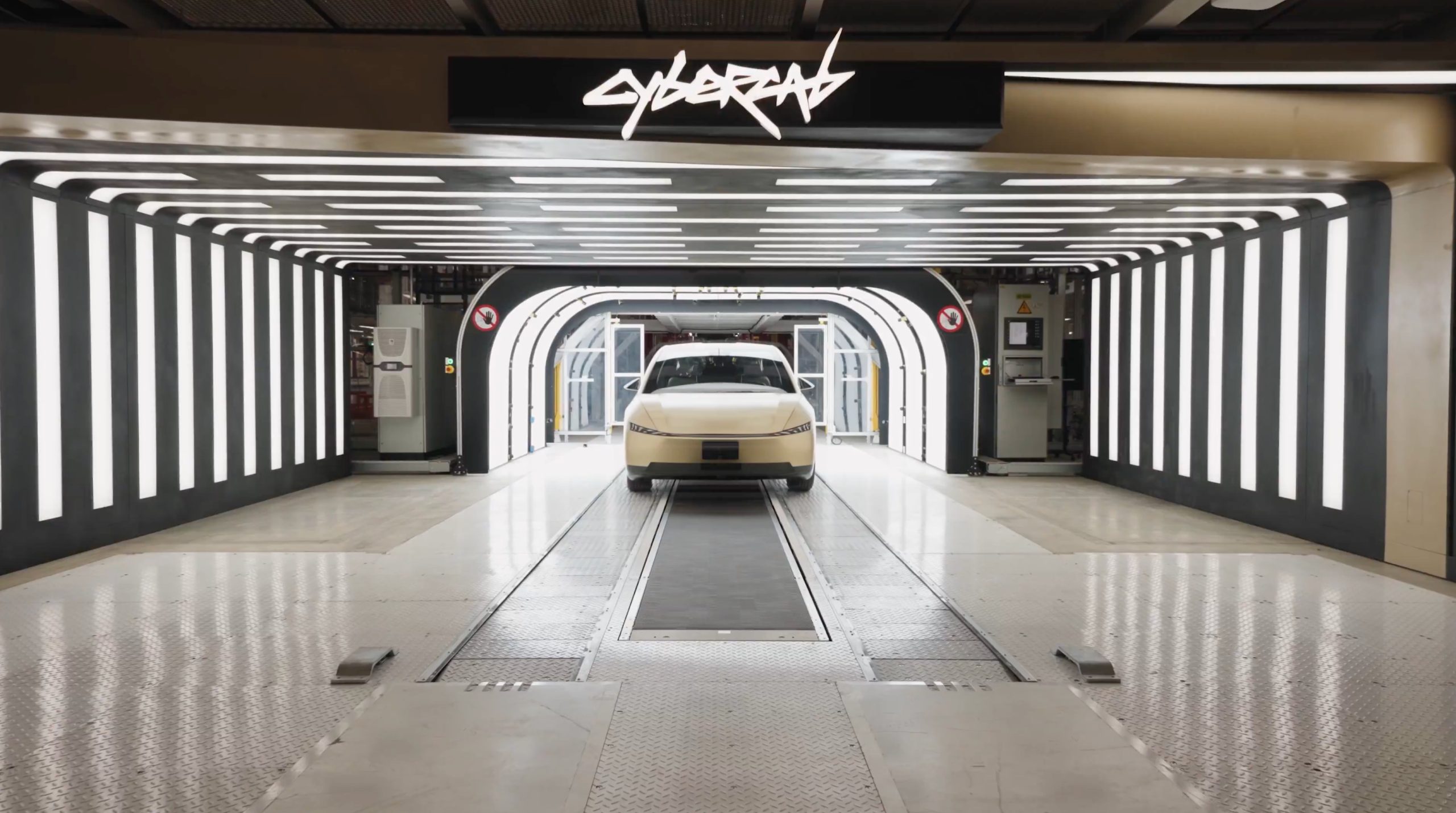
Tesla bear Michael Burry got blunt with his beliefs over the company’s valuation, which he called “ridiculously overvalued” in a newsletter to subscribers this past weekend.
“Tesla’s market capitalization is ridiculously overvalued today and has been for a good long time,” Burry, who was the inspiration for the movie The Big Short, and was portrayed by Christian Bale.
Burry went on to say, “As an aside, the Elon cult was all-in on electric cars until competition showed up, then all-in on autonomous driving until competition showed up, and now is all-in on robots — until competition shows up.”
Tesla bear Michael Burry ditches bet against $TSLA, says ‘media inflated’ the situation
For a long time, Burry has been skeptical of Tesla, its stock, and its CEO, Elon Musk, even placing a $530 million bet against shares several years ago. Eventually, Burry’s short position extended to other supporters of the company, including ARK Invest.
Tesla has long drawn skepticism from investors and more traditional analysts, who believe its valuation is overblown. However, the company is not traded as a traditional stock, something that other Wall Street firms have recognized.
While many believe the company has some serious pull as an automaker, an identity that helped it reach the valuation it has, Tesla has more than transformed into a robotics, AI, and self-driving play, pulling itself into the realm of some of the most recognizable stocks in tech.
Burry’s Scion Asset Management has put its money where its mouth is against Tesla stock on several occasions, but the firm has not yielded positive results, as shares have increased in value since 2020 by over 115 percent. The firm closed in May.
In 2020, it launched its short position, but by October 2021, it had ditched that position.
Tesla has had a tumultuous year on Wall Street, dipping significantly to around the $220 mark at one point. However, it rebounded significantly in September, climbing back up to the $400 region, as it currently trades at around $430.
It closed at $430.14 on Monday.









